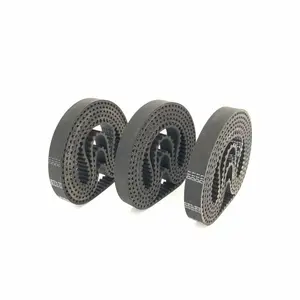Introduction to Tangential Belt
A tangential belt is a versatile component extensively used in various power transmission systems. Engineered to provide smooth, non-slip operation, these belts are crucial for ensuring the efficient functioning of machines in numerous industries. They excel at adapting to several applications, making them a preferred choice for manufacturers and engineers alike. In this guide, we will explore the types, functions, features, and advantages of tangential belts to understand their significance better.
Types of Tangential Belts
Tangential belts come in various types, catering to different needs and applications. Here are some common types:
- Standard Tangential Belt: Often used in conveyor systems, these belts can handle moderate loads and speeds, ensuring reliable operation.
- High-Performance Tangential Belt: Designed for high-load applications, these belts feature enhanced durability and resistance to wear.
- Specialty Tangential Belts: These are tailored for specific machinery and tasks, incorporating materials that suit unique environmental conditions.
- Reinforced Tangential Belt: Built for heavy-duty use, these belts are engineered with additional strength and durability features to withstand extreme stress levels.
Functions and Features of Tangential Belts
The functionality of tangential belts is underpinned by several features, which enhance their performance across different applications:
- Durable Material Composition: Typically made from high-quality rubber or polyurethane, tangential belts offer excellent resistance to abrasion and tearing.
- Low Noise Operation: Designed to operate quietly, these belts reduce noise pollution in work environments, making them ideal for delicate settings.
- High Flexibility: Their build allows for superior flexibility, enabling the belt to navigate around pulleys and other components effortlessly.
- Temperature Resistant: Many tangential belts are engineered to withstand extreme temperatures, making them suitable for a variety of industrial uses.
- Efficient Power Transmission: These belts excel in transferring power smoothly, which is essential for the optimal functioning of machinery.
Applications of Tangential Belts
Tangential belts are utilized in a broad spectrum of industries due to their adaptability and reliability. Here are some key applications:
- Manufacturing Machinery: Commonly employed in conveyor systems and other machinery for transporting goods.
- Automotive Industry: Used in engine components and other mechanical assemblies that require reliable power transmission.
- Textile Industry: Essential for various operations in fabric production and processing, where precision and control are crucial.
- Food Processing: Employed in conveyor and packaging systems to ensure a clean and efficient flow of products.
- Paper and Printing Industry: Used in rollers and other print machinery to enhance operational efficiency.
Advantages of Using Tangential Belts
Choosing tangential belts as part of your machinery setup comes with various benefits:
- Cost-Effective: Tangential belts offer an economical solution for power transmission, reducing long-term operational costs.
- Enhanced Efficiency: With their low friction and high flexibility, these belts improve the overall efficiency of machinery.
- Long Lifespan: Designed to withstand wear and tear, tangential belts typically last longer than standard belts, decreasing the need for frequent replacements.
- Ease of Installation: These belts are user-friendly and can be easily integrated into existing systems without complex modifications.
- Customizable Options: Many manufacturers offer tangential belts that can be tailored to meet specific requirements, ensuring optimal performance in unique applications.

































